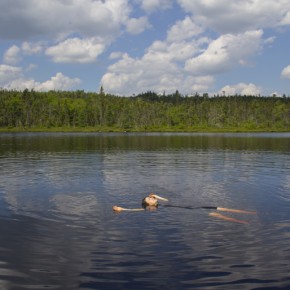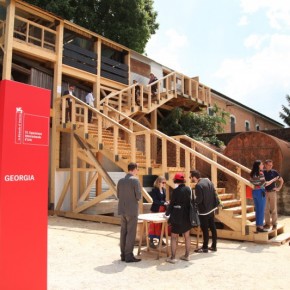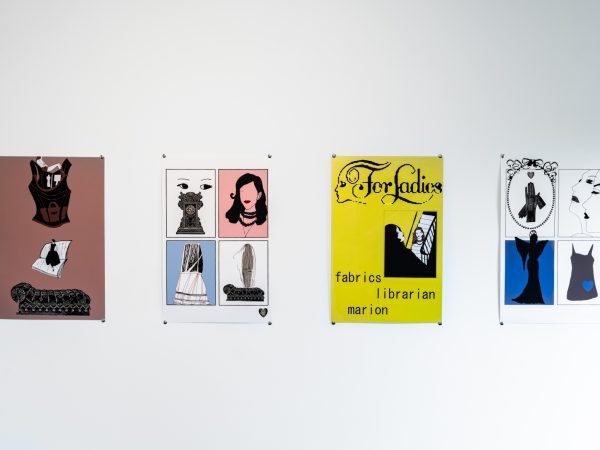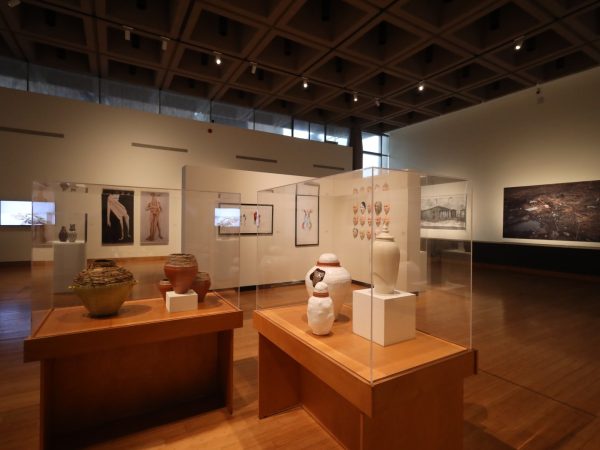 David Askevold, What is Church? Rural Churches of Nova Scotia and Prince Edward Island, (2001). Ink jet on canvas, 152.4 x 528.3 cm. Purchased by Art Gallery of Nova Scotia in 2004.
David Askevold, What is Church? Rural Churches of Nova Scotia and Prince Edward Island, (2001). Ink jet on canvas, 152.4 x 528.3 cm. Purchased by Art Gallery of Nova Scotia in 2004.
One day, in the spring of 1995 in some innocuous field in rural Prince Edward Island, David Askevold—already established as “one of the world’s most important contributors to the development and pedagogy of conceptual art”— was retracing his steps, searching for his glasses.
Terry Graff, then curator of contemporary art at Confederation Centre Art Gallery in Charlottetown, had grown accustomed to such incidents. The pair had been driving around the Island, snapping photographs for what would become Askevold’s exhibition Cultural Geographies.
They spent about five days in Graff’s blue GMC Jimmy, and Askevold would often get so excited about something they would happen upon that he would lose track of things like his glasses or lens cap.
It took about an hour, combing the grass somewhere on P.E.I., before Askevold’s glasses were found, but it was during these misadventures that the artist found something else, too—something that shaped the final 15 years of his great career.
It’s something that isn’t overtly emphasized in his most recent retrospective David Askevold: Once Upon a Time in the East, exhibited at the Art Gallery of Nova Scotia from April 13 – May 7, but is very much on display in pieces such as What Is Church?, a large inkjet-on- panel piece, a kind of collage of churches and religious iconography he had documented from around Nova Scotia and P.E.I. on road trips with his wife Norma Ready.
Conceived before he died in 2008, Askevold wanted this Nova Scotian retrospective to emphasize his then current production, in which the artist-as-traveller’s works reflected his chance encounters and happenings. Askevold, who first came to Halifax from the United States in 1968 to lecture at Nova Scotia College of Art and Design, was notorious for his Projects Class and “unorthodox approach to making art.” For this he was famous, but like too many senior artists, his current work didn’t have that patina of legend. As such, he envisioned that his early work would be used to showcase his continued production.
In the end, David Diviney—who curated the retrospective—opted for a more balanced presentation, one with the hopes to, “bring a newfound awareness to his significant contribution.” But what of this work, particularly from the 1990s, that saw Askevold hitting the road, travelling?
“I would argue it was something that was present in the earlier work too, but manifest in different ways,” Diviney says, noting Askevold’s photo-textual work, dream sequences, habit of juxtaposition and interest in chance operations, systems, play and adhering to conceptual frameworks. “These ideas of travel and escape can be found in his mode of storytelling.”
Askevold ended up working with the roadscape and small craft harbours along the coast in Nova Scotia, P.E.I. and B.C., before expanding to Maritime churches, Yellowstone National Park, Los Angeles, the Halifax Harbour, Germany and Latrabjarg, Iceland.
Writing about his 2005 exhibition The Burning Bush, The Burned Bush, The Bush Trap, Askevold hinted at what his decade-long use of travel was about: “The pictures had a time-lapse feeling—film-like and it feels like there is a juncture of time showing itself.”
Although, for that show, Askevold was specifically speaking to the technique of layering photographs he was using to make the work, it’s a characterization that sums up his other projects of the time. He was taking photographs of everything and anything, turning photographs into “an idea of a random event.” Travel became a kind of locomotive laboratory.
“It just opens up the whole terrain. Without doing that [travelling] it wouldn’t happen,” says Graff. “That’s where those
special moments of synchronous synergy, just creative thought, occurred—out of those experiences.”
“I think he really liked the speed of it, and I think that was a part of making the work, his real experience of the place. It wasn’t just a cursory thing. We weren’t just fulfilling all the harbours. We got out and walked, questioned things, talked with people and thought.”
Much is made about the supernatural aspects of Askevold’s work in the accompanying book for David Askevold: Once Upon a Time in the East. In her essay “Haunted Past,” Irene Tsatsos refers to him as “a kind of aesthetic anthropologist … fascinated with memory, storytelling, and allusion; history, news, and popular culture; and the stated and implied narrative of it all.” Exploring meaning and mystery, Askevold sought to exhibit the ethereal, taking what Diviney calls a “path of alternative enlightenment … a lot of his work carries you along that journey he was along himself.”
“Here’s the thing. When David started to work, he would do things and it would seem, like, really simple to everyone else around him,” says Norma Ready, Askevold’s widow and long-time collaborator. “And what would eventually evolve is something … haunting—something would come out. If it didn’t come out, he would make it come out. It was just who he was.”
Ready remembers their road trips as a collaboration. Askevold was a phrenic peripatetic, so being on the road suited him. But not only that, travelling with another person offered a kind of non-stop collaboration, one without a punch clock and at the mercy of chance.
“You know what’s interesting about David? … When he’s there something happens,” Ready says. “He wasn’t a preconceived, premeditative kind of human being. Obviously he had a larger idea in his head, but it completely dissolved until something he sees occurred.”
Ready can’t say whether not Askevold would have created his later work if he was travelling alone. She and Askevold would just drive around, say, looking at churches, until they were compelled to stop. Or Askevold would pull over their gold Honda out of the blue and set his camera up in the road on a brick.
“It was kind of free flow. I have to be honest with you. It was a road trip … it was kind of random in a way, and yet it was specific,” Ready says. “It was totally amazing is what it was. It was like a freedom palace. Really.”
After their trip around P.E.I., Terry Graff and Askevold immediately had their photographs developed and spread them over every surface in Askevold’s hotel room in Charlottetown. And Askevold photographed that as well. And from those shots came a triple exposed image, of the hotel room and two other island landscapes.
















Leave a Reply